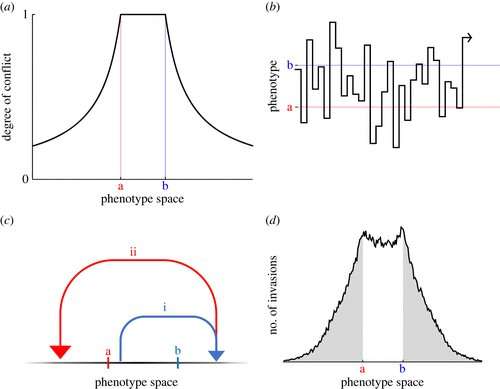This article has been reviewed according to Science X's editorial process and policies. Editors have highlighted the following attributes while ensuring the content's credibility:
fact-checked
peer-reviewed publication
trusted source
proofread
Geometric model yields insights into the dynamics of evolutionary conflict

The divergent goals of two opponents—whether they are individual people or entire nations—can be thought of as two points in a multi-dimensional space of possibilities, and the ensuing battle of wills can be described in terms of a ball bouncing around in this same space. When one party gains temporary control of the ball, they move it closer to where they want to to be, but their opponent is then liable to seize control and move the ball in the opposite direction.
A new paper published in Proceedings of the Royal Society B: Biological Sciences focuses on conflicts that are of interest to evolutionary biologists—including those occurring between genes, between individuals, between the sexes, and between the generations.
The geometric approach reveals that not only are these conflicts liable to continue indefinitely through evolutionary time, but that they are also able to spill out from the initial battleground and cause extensive collateral damage in areas where there is no actual disagreement. The damage is particularly devastating to complex organisms and social structures, and so conflict places an important barrier to the evolution of complexity.
The geometric analysis finds that such collateral damage is greatly reduced if organisms and their societies embody the principle of modular design, which constrains the bouncing ball to move only in certain directions at any given time.
This suggests that modularity is a crucial—and previously unappreciated—enabler of complex adaptation and transformative changes in social organization, from the evolution of multicellular life to the emergence of superorganismal insect societies.
More information: Petri Rautiala et al, The geometry of evolutionary conflict, Proceedings of the Royal Society B: Biological Sciences (2023). DOI: 10.1098/rspb.2022.2423
Journal information: Proceedings of the Royal Society B
Provided by University of St Andrews





















